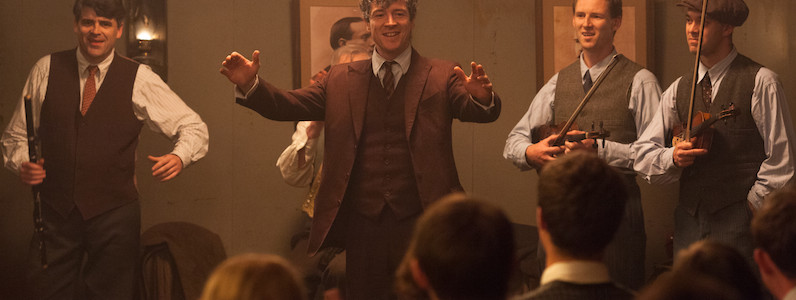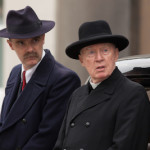
Tradition, self-expression square off in ‘Jimmy’s Hall’
By Bob Bloom
“Jimmy’s Hall” examines the conflict when free speech butts up against entrenched and traditional values and precepts.
The movie, directed by the wonderful Ken Loach and written by his longtime  collaborator, Paul Laverty, is set in Ireland during the tumultuous times of rebellion and civil war.
collaborator, Paul Laverty, is set in Ireland during the tumultuous times of rebellion and civil war.
The story centers on Jimmy Gralton (Barry Ward), a young man who, with some neighbors, builds what amounts to a community center at a crossroads in a rural area.
The center is a haven where people, young and old, can come to read, learn to paint or box, write, dance and play music.
The church and local politicians, naturally, view the newly named Pearse-Connolly Hall with suspicion, fearing it will stir up emotions and loosen their grip on the area’s poor and out-of-work residents.
In 1921, Gralton is forced to flee to the United States. Eleven years later, he returns home, vowing to live a quiet life with his mother.
The hall has fallen into disrepair, and Gralton is content to let it stay that way, until a group of young people and many of his friends pressure him to reopen it.
Once again the church, in the person of the Rev. Fr. Sheridan (Jim Nolan), feels threatened, seeing the hall as a place run by communists who mean to stir up discontent and upset the status quo.
Sheridan, with the aid of wealthy and powerful local landowners, put pressure on their parishioners and tenants to boycott the hall, but to no avail.
Sheridan is the film’s nominal villain, as he uses his pulpit to arouse passions and fears against the hall, going so far as to read off at Mass the names of those in his flock who were seen entering the center.
Gralton tries to reason with the clergyman, who is set in his ways and believes the church alone should be the guiding voice in the community.
Loach and Laverty lean toward Gralton’s point of view. But, overall, they are fair with Sheridan, portraying him as a true believer who is certain he is following God’s instructions.
What is most interesting about “Jimmy’s Hall” is the sociopolitical picture it paints of an Ireland that is supposedly united, but is actually divided by class and religion.
The movie paints a picture of a church hierarchy that has basically ruled people’s lives for centuries and is unwilling to bend with modern times — not out of malevolence, but of fear and distrust of change.
“Jimmy’s Hall” is loosely based on true events. But fact or fiction, you cannot deny the humanity and grace that Loach brings to the project.
At 79, Loach has indicated this may be his final film. If true, he goes out a winner, while his retirement is a loss for those who relish stories about social justice, compassion and the individual’s rights of self-expression.
Bloom is a member of the Indiana Film Journalists Association. His reviews appear at ReelBob (reelbob.com) and The Film Yap (filmyap.com). He also reviews Blu-rays and DVDs. He can be reached by email at bobbloomjc@gmail.com or on Twitter @ReelBobBloom. Other reviews by Bloom can be found at Rottentomatoes: www.rottentomatoes.com.
JIMMY’S HALL
3½ stars out of 4
(R), language, violence, sexual content